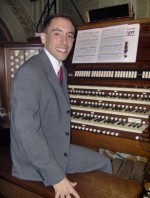Column Name
Title
“If a man would live again in the musical history of 1,000 years, let him sit in the choir of a cathedral and listen,” wrote 20th-century English composer Sir George Dyson. His statement accurately esteems the value of choral music as the core of our musical establishment and the greatest tool in the teaching of its development. The choir is the only instrument or ensemble that maintains a repertoire from the very beginnings of Western music. While instruments such as the trumpet and drum may vie for the title to such a claim, they have been the subject of technological advancements. The choir’s instrument, the voice, is literally the natural choice for man’s musical expression. Part of the choir’s allure is its ability to render ancient music without reverting to “period instruments,” for the voice is for all time. Plainchant, for example—considered the rock on which all music thenceforth was built—is still performed in virtually the same manner as it has been for nigh 1,500 years.
Body
Through the many changes of musical style, choral music has always drawn into its realm the greatest composers and demanded of them their very best. The difficulty of writing for this ensemble is a daunting challenge; however, when surmounted, the results often become the greatest moments of musical beauty. Almost every composer of renown has left his mark on this genre: Mozart, Beethoven, Mendelssohn, Rachmaninoff, Tchaikovsky, and Elgar are but a few of the orchestral giants who wrote large-scale choral works. Their choral compositions, however, are often unjustly overshadowed by their orchestral or solo-instrument output.
There are many choral societies across the country, but very few maintain as active a schedule as the professional orchestra. While an orchestra may offer 50 or more concerts in a season, a choir may only offer five, often because its member base is the amateur musician. Their profile is further reduced by the fact that they frequently perform in churches or smaller halls, and typically receive limited funding. It is no wonder, then, that because of such a cloistered position, many people are unaware that such a treasury of music exists.
The solution to such an ignominy is a simple one: explore choral music! Go beyond Mozart’s Requiem and Handel’s Messiah. In Manhattan alone, there are many choirs whose performances are of the highest quality, some of which—including the St. Thomas Choir of Men and Boys, the Voices of Ascension, the Choir of St. Ignatius Loyola, and the Tiffany Consort, offer annual concert series.
Not only by attending concerts can an appreciation for choral music grow. As we performers know, listening is rarely as intoxicating as actively participating. So many colleges maintain thriving choral programs because their students, music majors and non-majors alike, have found it a wonderful outlet for their artistry. It instills discipline and improves musicianship in a way that nothing else can.
Hence it should go without saying that such an exposure to this vital part of our musical world would be pursued at Juilliard and that everyone, especially non-orchestral musicians, would have the opportunity to sing in a choir. Not for many years has the School maintained a student-based chorus. Until being placed on hiatus at the end of last year, the Juilliard Choral Union, although mainly populated by adults participating through the Evening Division, still provided an ensemble in which at least few students participated. Therefore, it is my hope to found a club at Juilliard whose purpose will be to explore the repertoire through singing, and to foster an appreciation of the art that is choral music.





